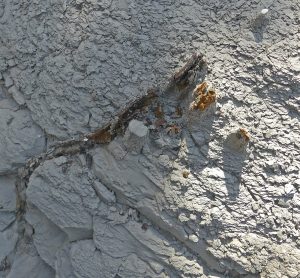Field Station of the University of Alabama Museums
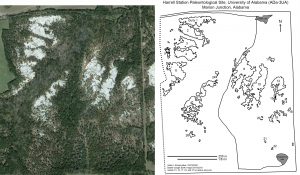
View Full Map
Harrell Station is an important site for paleontology in the SE USA, located in the Black Belt region near Marion Junction, Dallas County, Alabama. The sediments of the Mooreville Chalk rock unit are exposed here in a series of gullies and contain a great variety of marine vertebrate and invertebrate fossils from the Cretaceous period. Over 50 macrofossil species have been reported from the area so far, including 15 new species. Microfossils were diverse as well with well over 100 known species. The age of the sediments is about 82 million years (early Campanian part of the Cretaceous period) based on the study of these microfossils.
During that time, sea level was over 200 m higher than today globally and the Gulf of Mexico covered nearly all of Alabama except the northeastern part. Sea surface temperatures in Alabama were higher than today with around 25°C (77°F). The ocean at what is now Harrell Station was moderately deep (< 200 m) and the site was far away from the coastline. On the sea floor, tiny particles of limestone and clay built up over millions of years, with fossils embedded in them.

View Full Map
Brief History
Eugene Allen Smith (the 2nd state geologist of Alabama and instrumental in the early days of the Alabama Museum of Natural History) wrote already in 1900 about the gullies in the area near Marion Junction. Active fossil collecting and research in the area began decades later. In the summer 1945, Mr. Barber from the Field Museum in Chicago explored West Alabama near Eutaw and found fossil bones. He enthused people at the Field Museum so a crew including paleontologist Ranier Zangerl came out in the fall. During that trip, they learned about fossils near the railroad station of Harrell Station and went there. It turned out to be a very successful trip. The 2nd expedition took place in May of 1946, during which also the first dinosaur remains of Alabama that could be ascribed to a species were found. Additional trips were organized in 1947 and 1949.
Around 1990, the then director of the Alabama Museum of Natural History, Douglas Jones, acted upon the many research and education opportunities he saw for Harrell Station. With the generous help of several donors of the museum’s board of regents, the University of Alabama bought an important part of the Harrell Station area. The purchase of 132.5 acres (~52 ha) from Robert and Nancy Wilson was made official on 31 May 1991. While the University of Alabama has since owned an important part of the Harrell Station area, the rest has remained private property. The UA property is managed by the Curator of Paleontology of the Department of Museum Research and Collections / Alabama Museum of Natural History since 1991.
Rock
The rock unit exposed at Harrell Station is called the Mooreville Chalk. While the word chalk implies that that the rock is composed almost exclusively of limestone, only a little over 50% on average is actually limestone. Clay represents another important component of the Mooreville Chalk (about a third), whereas sand and silt-sized particles make up the remainder of this rock. Rather than a chalk, the rock is best classified as a marl. The limestone is full of fossils and is made up primary of microfossils with calcitic plates called coccolithophores, which are single-celled planktonic organisms. The Mooreville Chalk is 110 m (360 ft) thick in Dallas County, and about 15 m of it is exposed at Harrell Station. These 15 m were deposited in less than 500.000 years.
Fossils
Many fossil species have been reported from the Harrell Station area since the 1940s. A renewed literature survey by UA’s Curator of Paleontology in April 2023 resulted in 9 species of shark, 23 fishes, 9 turtles, 7 mosasaurs, 4 dinosaurs including a bird, 1 pterosaur, 1 crocodile, 2 ammonites, 1 worm, 5 bivalves, 1 bryozoan, 30 ostracods, 15 planktonic foraminifera, and 4 coccolithophores. This is not a complete list of species that are found at Harrell Station. Dozens of additional species, mostly already described from elsewhere, are present in museum collections and await verification.
Whereas the literature may give the impression vertebrates dominate the macrofossils at the site, the reality is very different. While vertebrate fossils such as isolated teeth and vertebrae are present, invertebrate fossils are much more abundant at Harrell Station. Invertebrates that can be seen without a microscope, particularly bivalves, are much more common than vertebrates. Roughly, for every tooth, one can easily find 100 or more bivalves in many places at Harrell Station. For microfossils, 1 cm3 (about the size of a cube of sugar) contains at least 8–10 billion nannofossils!
Major collections of fossils from Harrell Station are deposited in the Alabama Museum of Natural History (University of Alabama Museums, Tuscaloosa, Alabama), the Field Museum (Chicago, Illinois), McWane Science Center (Birmingham, Alabama), Auburn University Museum of Natural History (Auburn, Alabama), and the Black Belt Museum (Livingston, Alabama).
Examples of fossils found at Harrell Station:
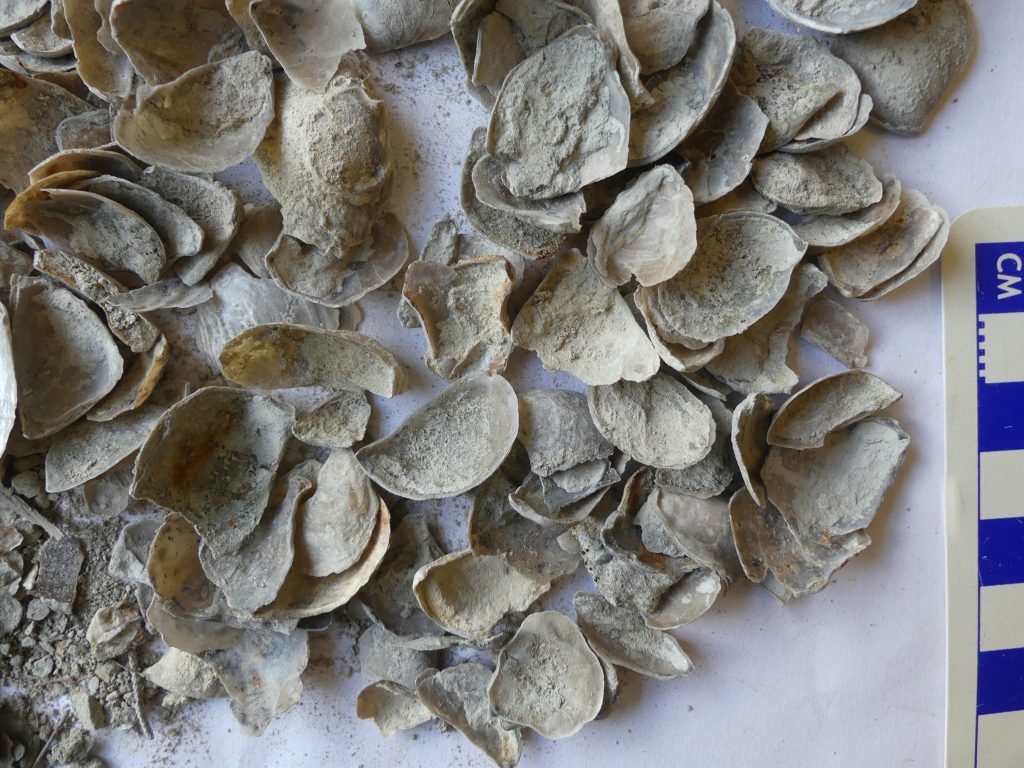
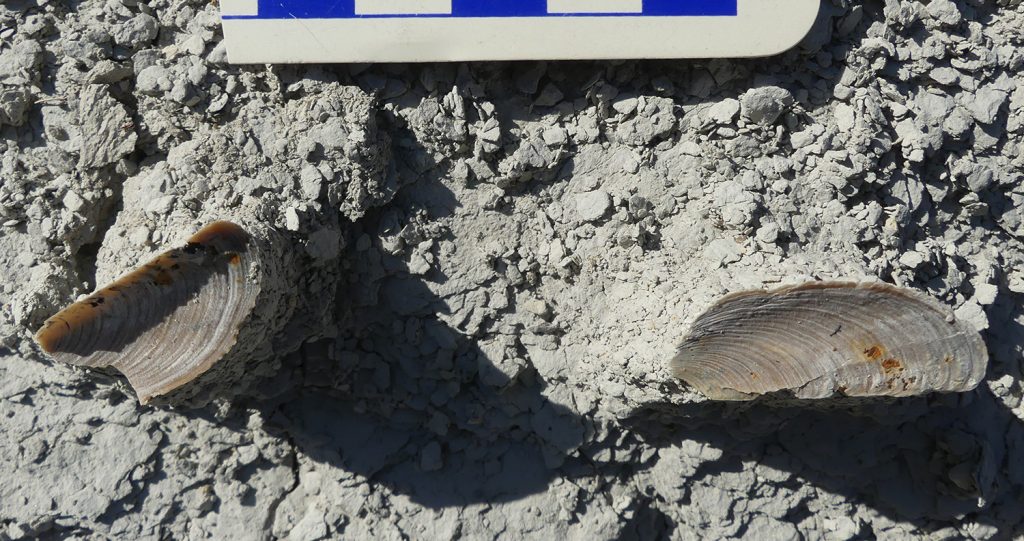
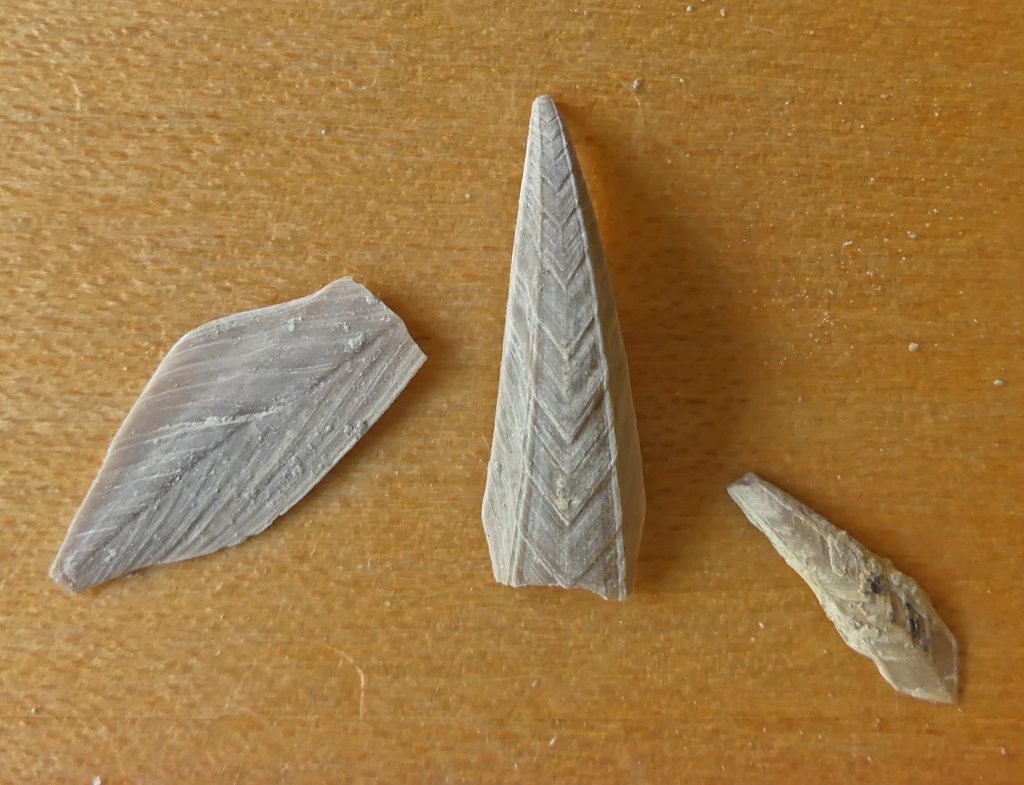
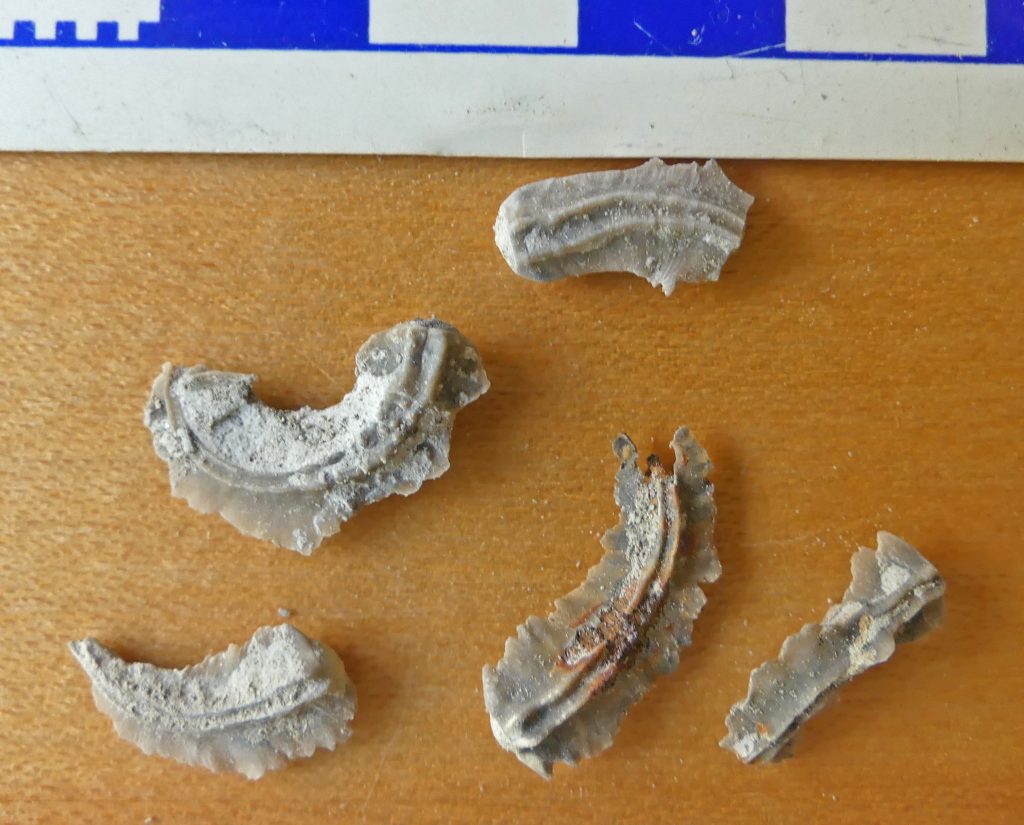
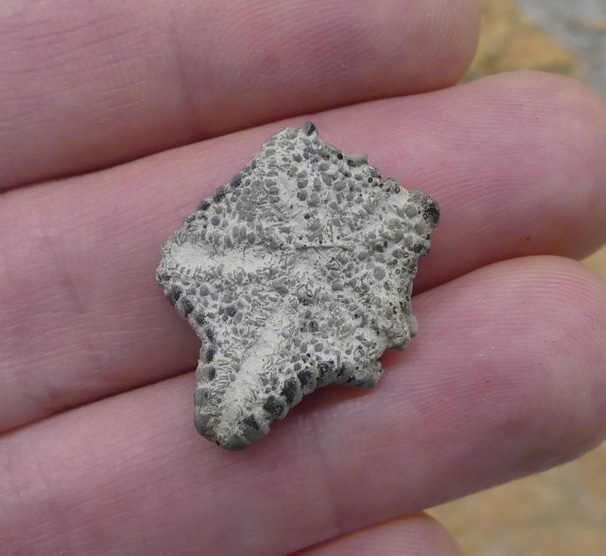
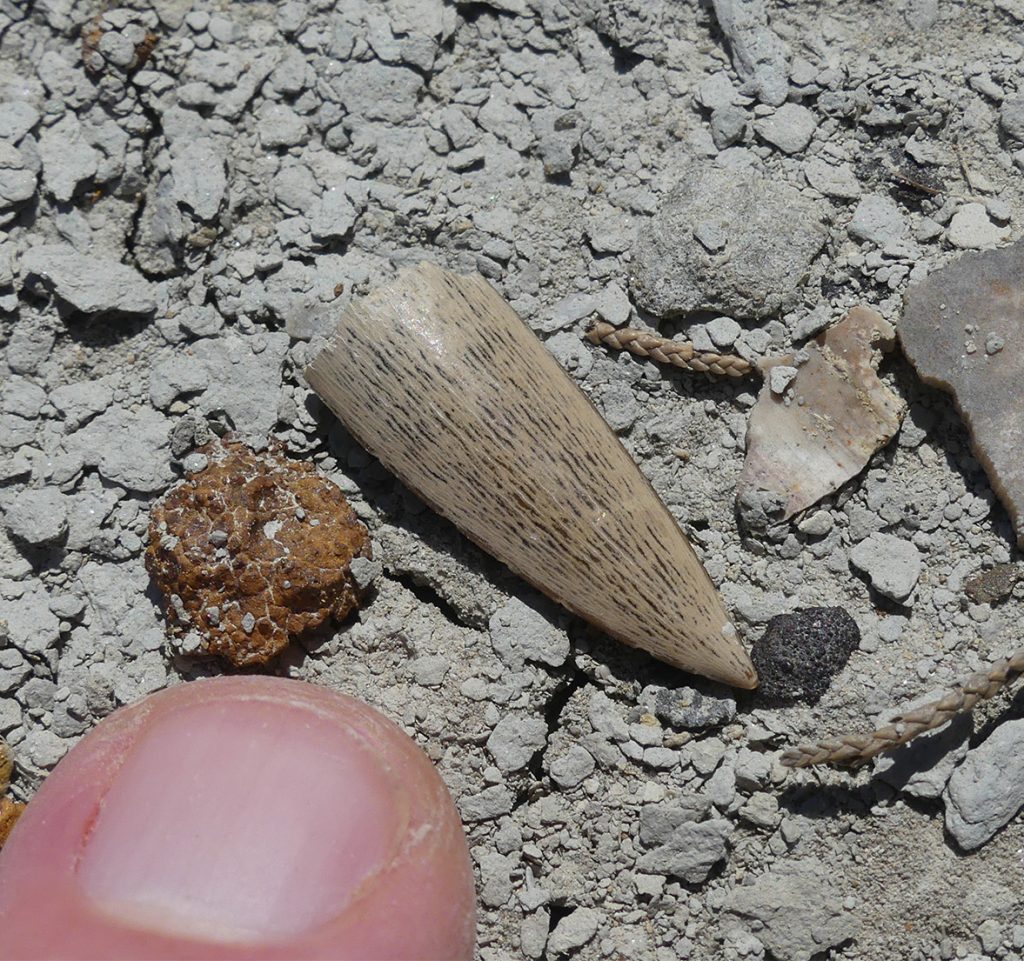
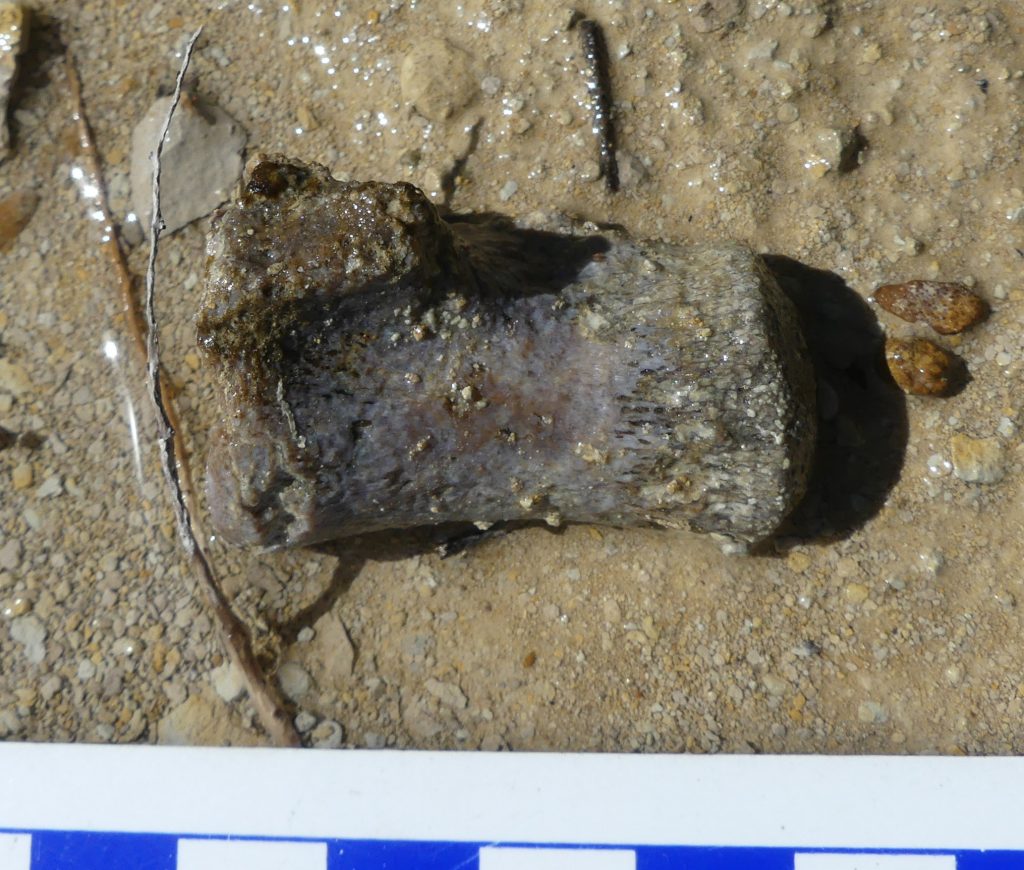
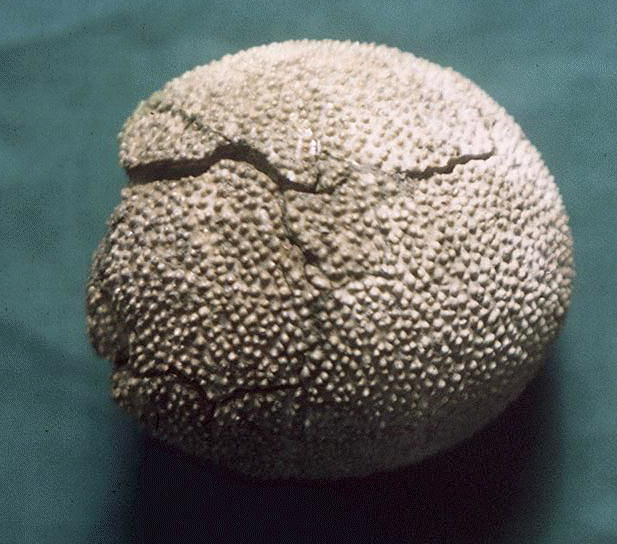
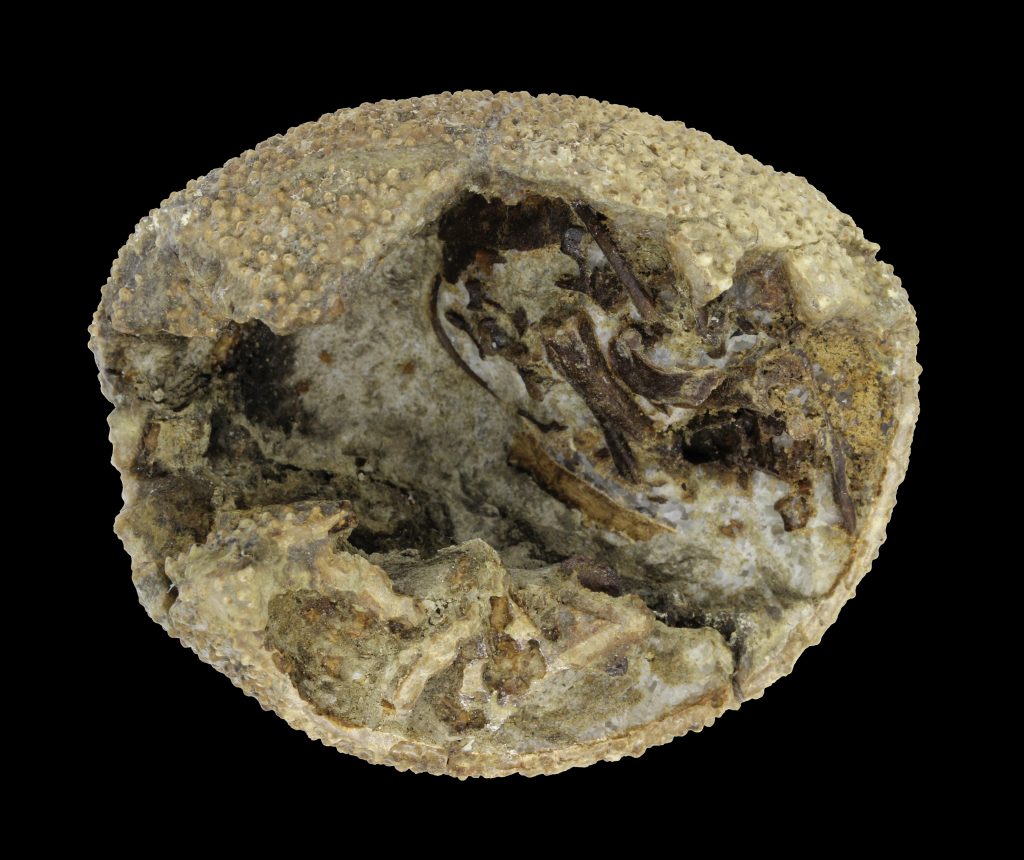
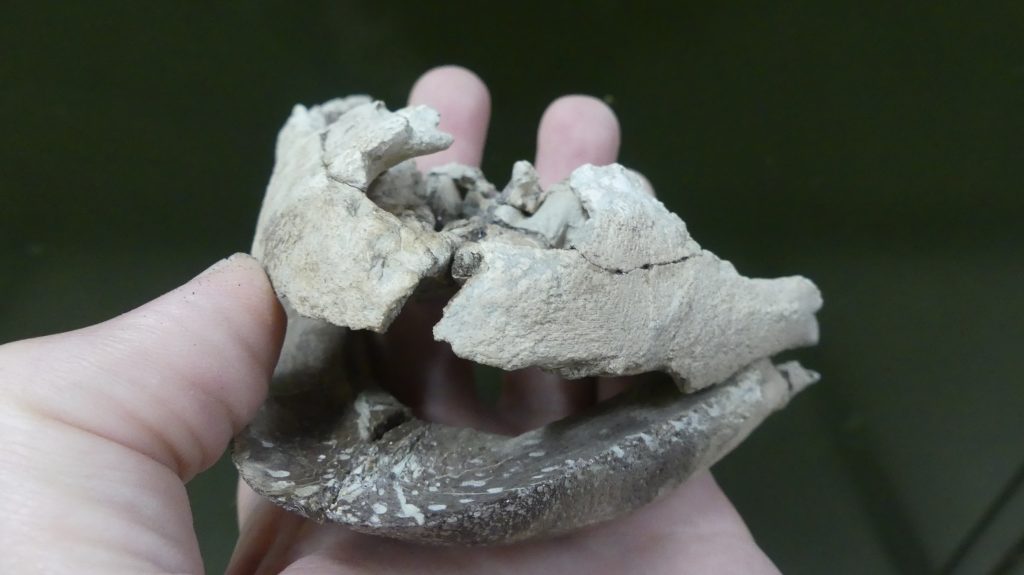
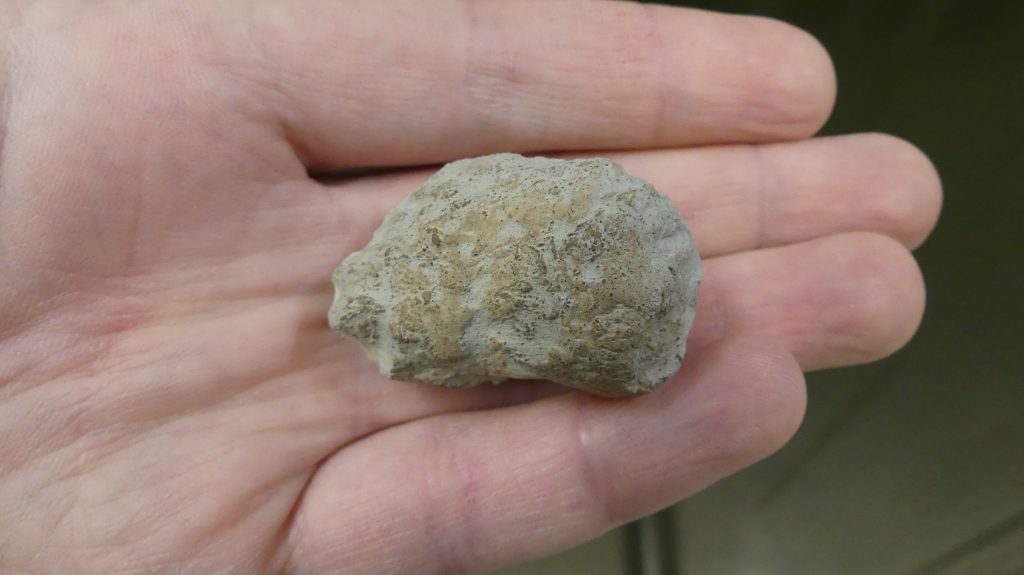
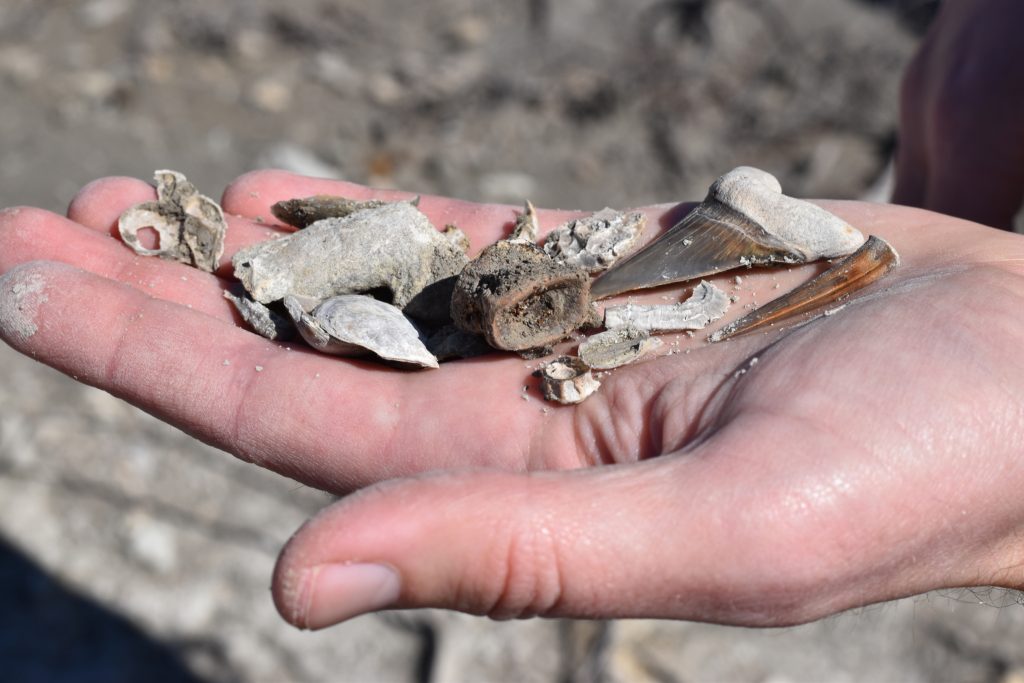
Animals and Their Tracks and Plants
A variety of animals and plants live at Harrell Station. A full inventory of all species has not been performed, but the varied landscape of forest, chalk gullies, streams, and some meadows allows different animal and plant communities to coexist at the site. More about life in the Harrell Station area can be found on iNaturalist.
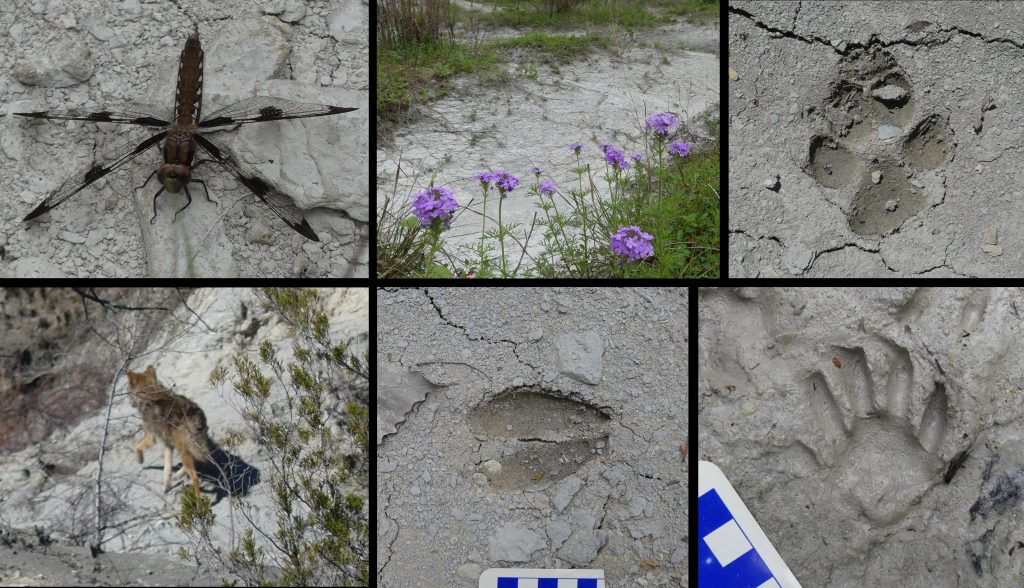
Uses of Harrell Station
Research
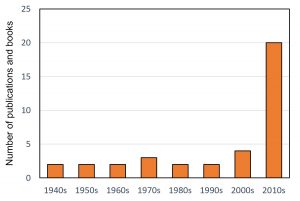
Since the 1940s, scientists have done much research on the fossils found at the Harrell Station area. The first wave was based on collecting efforts in the mid-to late 1940s. Papers from 1948–1970 described a diverse fauna of turtles, dinosaurs, mosasaurs, and fishes. Research and collecting efforts continued subsequently, focusing mostly on vertebrate fossils with a remarkable increase in research interest and scientific articles from 2010–2019. Microfossils such as coccolithophores, ostracods, and planktonic foraminifera have been studied in detail as well, which has helped to determine the age of the Mooreville Chalk exposed at UA’s Harrell Station Paleontological Site. Limited research has been done on the larger invertebrate fossils so far. In total, fossils from Harrell Station have been used to describe 15 new vertebrate species, 13 of which are still considered valid.
New species reported from the Harrell Station area.
| Number | Common name | Scientific name | Remarks |
|---|---|---|---|
| 1 | dinosaur | Lophorhothon atopus Langston, 1960 | |
| 2 | fish | Bananogmius crieleyi Applegate, 1970 | |
| 3 | fish | Edaphodon barbari Applegate, 1970 | |
| 4 | fish | Megalocoelacanthus dobiei Schwimmer et al., 1994 | |
| 5 | fish | Moorevillia hardi Applegate, 1970 | |
| 6 | shark | Cretalamna bryanti Ebersole & Ehret, 2018 | |
| 7 | shark | Cretasquatina americana Maisey et al., 2020 | |
| 8 | turtle | Ctenochelys acris Zangerl, 1953b | |
| 9 | turtle | Ctenochelys tenuitesta Zangerl, 1953b | |
| 10 | turtle | Lophochelys venatrix Zangerl, 1953b | |
| 11 | turtle | Podocnemis alabamae Zangerl, 1948b | junior synonym of Podocnemis barberi Schmidt, 1940 |
| 12 | turtle | Prionochelys matutina Zangerl, 1953b | |
| 13 | turtle | Protostega dixie Zangerl, 1953a | junior synonym of Protostega gigas Cope, 1872 |
| 14 | turtle | Thinochelys lapisossea Zangerl, 1953b | |
| 15 | turtle | Toxochelys moorevillensis Zangerl, 1953b |
Education
Harrell Station has been visited several times during the annual Alabama Museum of Natural History Museum Expedition. Since its inception in 1979, expedition participants searched for fossils in the Harrell Station area in 1982, 1988, 1993, and 2019. Specimens from Harrell Station have been used for teaching classes/labs and Harrell Station has been visited during university class field trips and paleontological society field trips. Fossils from Harrell Station have also featured in other outreach events by the Alabama Museum of Natural History.
Exhibits
Fossils from Harrell Station have been and are being used for museum exhibits. The Alabama Museum of Natural History had a special exhibit on Harrell Station fossils in 1997–1998. There are plans for a future exhibit on Harrell Station at the Alabama Museum of Natural History.
Accessibility
University of Alabama Harrell Station Paleontological Site is not accessible to the general public. The property is entirely enclosed by private land and is gated and fenced off. Occasionally, special field trips to Harrell Station are being organized for current members of the Alabama Paleontological Society (fall trip) and the Birmingham Paleontological Society (spring trip).
More Information
1. Museums From Your Home episode on Harrell Station, 16 April 2020
2. Discovering Alabama‘s “Alabama Fossils” 10 May 2021 Episode, including Harrell Station
3. News article (June 26, 2020): New shark holotype from Harrell Station
4. Hakai Magazine article (September 8, 2021): Alabama’s Return to the Sea
5. The Atlantic article (September 11, 2021): Alabama’s Water Past Is a Warning
6. AL.com article (December 9, 2021): Alabama Black Belt among world’s top sites to find ancient sea monsters
7. UA Museums article (April 8, 2022): Student finds rare mosasaur bones at Harrell Station
8. UA Museums article (December 13, 2023): Student develops new fossil exhibit for Blount Scholars Program
9. UA Museums article (April 23, 2024): Students discover rare fossils during Blount Scholars course field trips
If you have any questions or remarks, feel free to contact the Harrell Station property manager:
Dr. Adiel Klompmaker, Curator of Paleontology
- Email: aaklompmaker@ua.edu
- Phone: 205-348-7425

